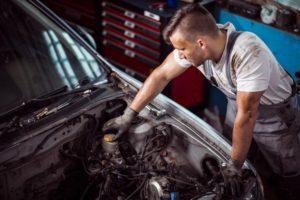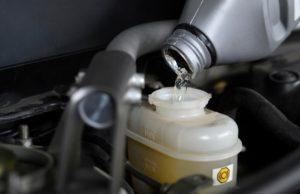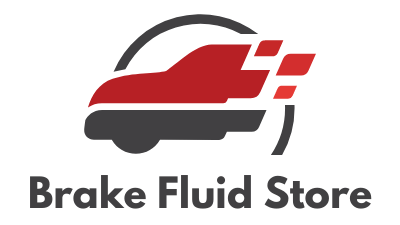Choosing the best high temp brake fluid is important. There is a distinct difference between DOT 3, 4, and 5 versions of brake fluid. DOT 3 and DOT 4 absorb water, which leads to a decrease in boiling point, whereas a DOT 5 does not absorb water. It has the distinct advantage of a stable boiling point. Choosing the best high temp brake fluid for your vehicle will increase its braking system efficiency.
DOT 5 brake fluids are silicone-based. They are hydrophobic, which indicates that they repel water. We know that, over time, moisture is introduced into your brake system, which ends up decreasing the vehicle’s overall performance until it is either topped up or changed.

When you use DOT 5 brake fluid, water doesn’t mix with it. This brake fluid causes water to boil or freeze, which can generate a brake fade.
DOT 5.1 can maintain a low viscosity over a wider variety of temperatures and is glycol-based. It allows water to be absorbed as time passes (hygroscopic). As water enters the brake system, the boiling point of this fluid lowers.
This type of brake fluid has high dry and wet boiling points. They can handle higher temperatures before turning into vapor.
Silicone and glycol-based fluids do not mix. DOT 5 should only be used in a dry system or if your vehicle already has it in its system. However, you. can interchange DOT 3, DOT 4, and DOT 5.1.
Contents
How to Choose the Best High Temperature Brake Fluid

Picking a cheap quality brake fluid can lead to a disaster. It can end up destroying your brake system and may end up costing money in repairs. The best brands have the following characteristics in common.
Check the Mixing Ability
Not all brands of high-temperature brake fluid contain the same mixing ability. This ability is different across brands, and many people tend to go for a larger brand, but it may not yield the best results.
As previously mentioned, make sure that you can mix the products before attempting to do it. Some DOT brands do not mix with others and can lead to brake failure. This is the difference between topping up brake fluid versus draining it.
Examine How Well They Absorb Moisture
Many types of brake fluids say they have a low moisture content, but they do not have the desired properties- especially when it comes to decreasing vapor lock.
When shopping for brake fluid, ensure they have a low moisture level. This also determines the service interval, as it can affect your fluid’s compressibility. Low levels of moisture are the main reason people buy high-temperature fluids.
Ensure the Fluid is Non-Corrosive
Your brake fluid should not be corrosive, as it can negatively affect the ABS or any vehicle that has rubberized seals.
It Should Have a High Boiling Point
Cars require friction to make them stop. If you are racing or in a hardworking vehicle, your brakes may reach a temperature of up to 500°F. Over time, high heat can damage brake parts. If they become extremely hot, heat is unable to escape.
This will lead to damage, eventual brake failure, and unreliable performance. When you add hot weather, your brake system’s components have an increased opportunity for failure.
Furthermore, a high dry boiling point indicates that it is resistant to vapor lock. Vapor lock occurs when the fluid hits its boiling point, transforms into compressible gas, and leads to a long brake pedal.
Make Sure it has a Low Viscosity
Low viscosity means that the brake fluid has a lower internal flow resistance. Low viscosity means that the fluid can flow more readily from the master cylinder, through your brake lines, into the ABS modulator, and throughout your brake calipers.
It gives you the quickest actuation of all your brake components. Low viscosity fluids perform better than normal fluids in passageways and channels located in the ABS/DSC pump. If the viscosity is high, there will be a delayed response in braking, making the brakes feel spongy.
Furthermore, if you have two fluids that have similar viscosities, the fluid with the higher one results in less wear of your brake system’s movable parts.
These are a few tips on how to choose high temp brake fluid. The two largest components to watch out for involve boiling point and moisture retention. Brakes generate high heat, and over time water will gather in the brake fluid. Since water contains a lower boiling point, it will quickly turn to steam and decrease the performance of your brakes.
If left unattended, air can enter your system and cause a vapor lock or even cause your brakes to fail.
Note that you will change your brake fluid frequently when racing due to the high heat generated. Dry brake fluid will always perform better in higher temperatures than wet brake fluid as the boiling point is much higher. This will keep your vehicle in optimal performing condition.
If you continue to care for your brakes, you ensure that you will always remain safe. Unfortunately, changing brake fluid is a frequently neglected component of regular car maintenance. Without proper lubrication and care, your brakes are more likely to malfunction.
